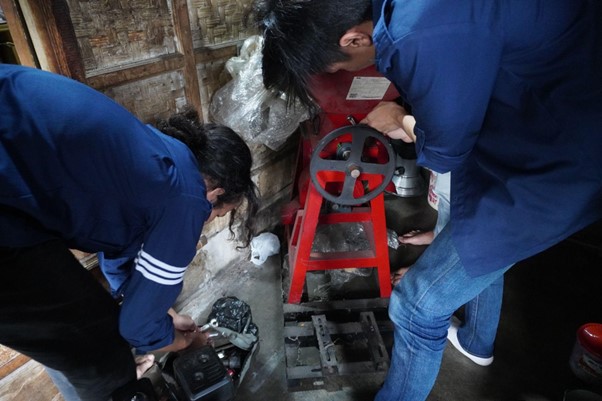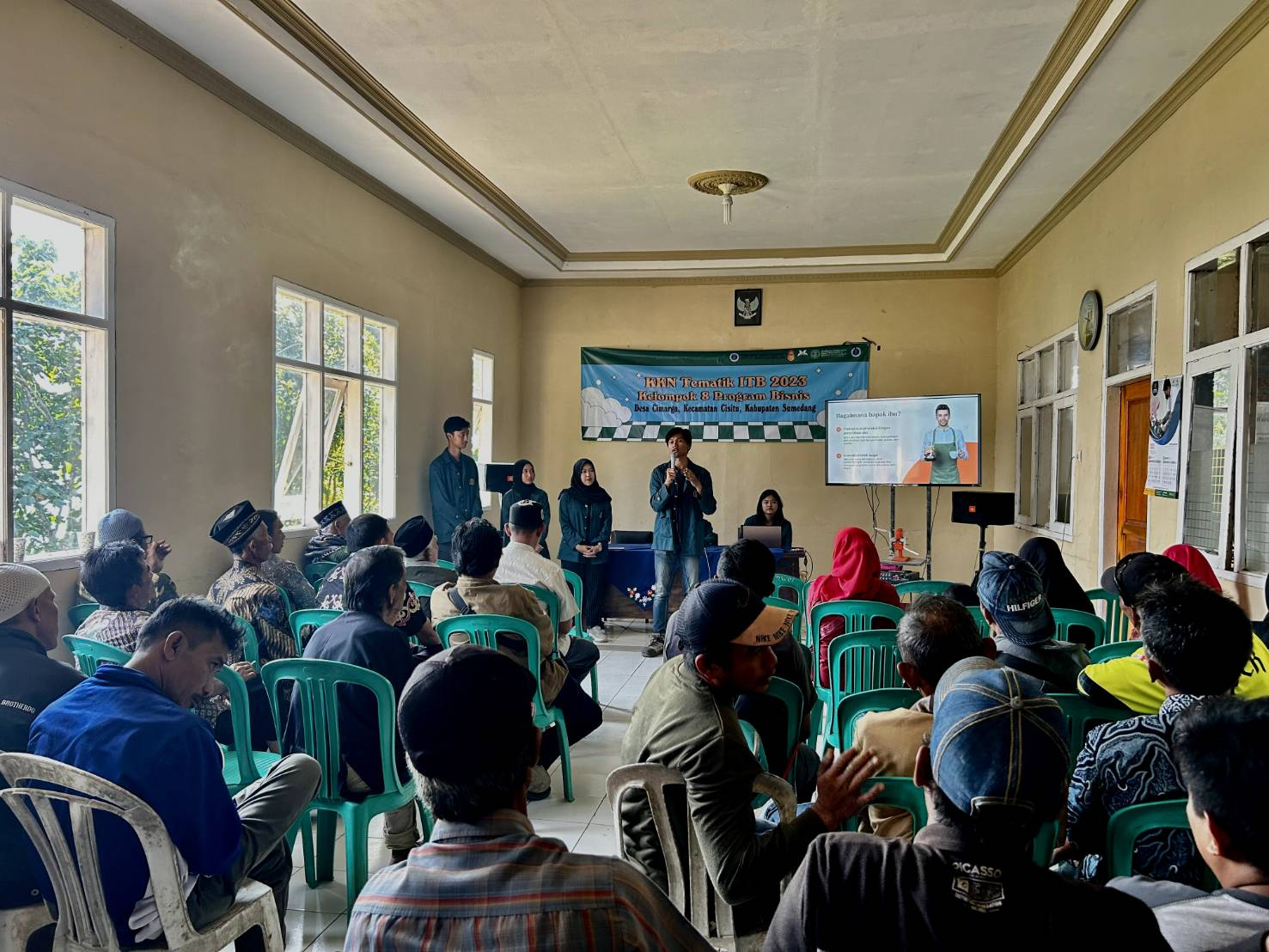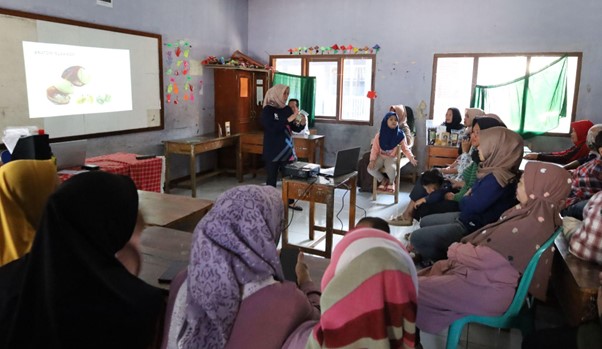SITH ITB PPM Team Designed a Coffee Dryer Green House in Geulis Mountain
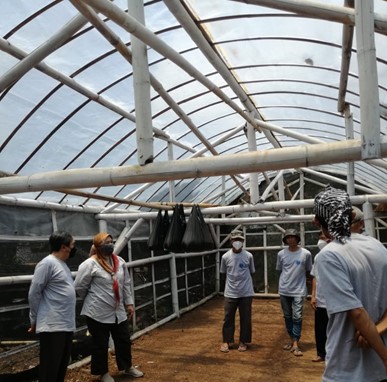
Sumedang, itb.ac.id--The Community Service Program (PPM) team from the School of Life Sciences and Technology (SITH) ITB designed a coffee dryer Green House (GH) to support the Coffee Farmer Community in Geulis Mountain in the utilization of post-harvest technologies. The GH is intended to be environmentally friendly as well as energy efficient.
According to Dr. Yayat Hidayat, S.Hut., M.Si., the team's leader, the GH dryer designed by the PPM SITH ITB team is a solar-energy drying building that uses the greenhouse effect caused by the transparent cover on the building wall and the absorber plate as a heat collector to raise the air temperature in the drying room.
"The concept of GH design is energy efficient and environmentally friendly, abbreviated as 'Herang' (Energy Efficient Environment Friendly)," said Dr. Yayat in a written statement to the Communication and Public Relation Bureau ITB on Tuesday (2/11/2021).
He explained that the GH drying building "Herang" is 11m x 4m in size and 2m in height. The building was built with non-metallic and environmentally friendly materials. UV plastic was used for the building's top and walls. The coffee cherries trays were constructed in stages to support a rotating drying process.
"The drying building is split into two buildings: a roofed and a non-roofed building, with the process moving from the latter to the former. By utilizing bamboo construction materials, the "Herang" dryer structure is primarily designed to be low-cost and environmentally friendlyhe stated.
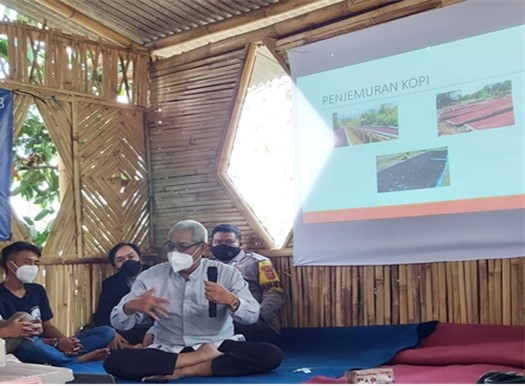
Photo: The explanation of the basic principles of the coffee drying room by Dr. Sapto Prayogo (Doc. Communication and Public Relation Bureau ITB)
The high air temperature promotes the evaporation of water from the object being dried, and the water vapor that escapes from the drying object raises the humidity in the room. This reduces the efficacy of the evaporation process later on.
The humidity in the room must be kept at an acceptable level to keep the evaporation process running properly. Several methods can be used to transfer air from the outside as well as to remove humid air.
It works by trapping heat in the GH room and releasing moisture trapped in the GH room, allowing the drying process to proceed without producing "cash hardening."
"So far, the Coffee Farmer Community in Geulis Mountain, led by Mr. Saepudin, does not have the appropriate coffee dryer GH building facilities yet, so coffee cherries are dried using available facilities. Of course, the dried coffee cherries are still of inferior quality,” he elaborated.
Meanwhile, drying coffee cherries is a postharvest process that impacts coffee quality. Drying activities for coffee cherries should be carried out in a location (room) where the temperature and humidity conditions can be tightly regulated, such as the coffee dryer Green House building.
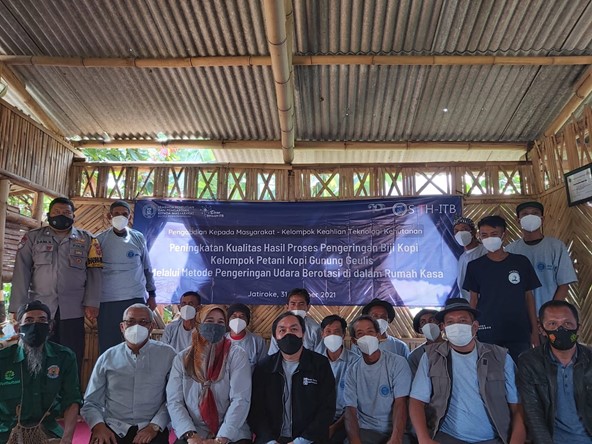
Understanding the concerns and demands of the Coffee Farmer Community in Geulis Mountain, SITH assisted in the design and construction of an energy-efficient and environmentally friendly GH coffee dryer through PPM this year.
The PPM activity was carried out in Jatiroke Village, Jatinangor District, Sumedang Regency, to design and install a GH coffee dryer (31 October 2021). This PPM is sponsored by a bottom-up approach using LPPM ITB funding. Dr. Ir. Yayat Hidayat MSi led the SITH PPM team, which also includes Dr. Ir. Rijanti Rahaju Maulani M. Si and Ahim Ruswandi M. P. Two students also participated in this year's PPM activity through the MBKM scheme.
Source: PPM Team SITH ITB Release
Translator: Sekar Dianwidi Bisowarno (Bioengineering, 2019)

scan for download



